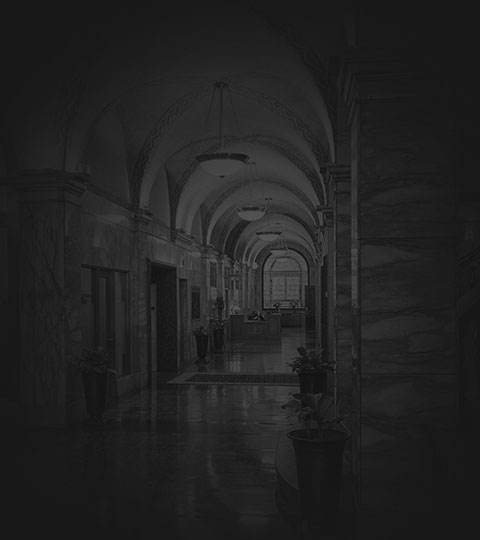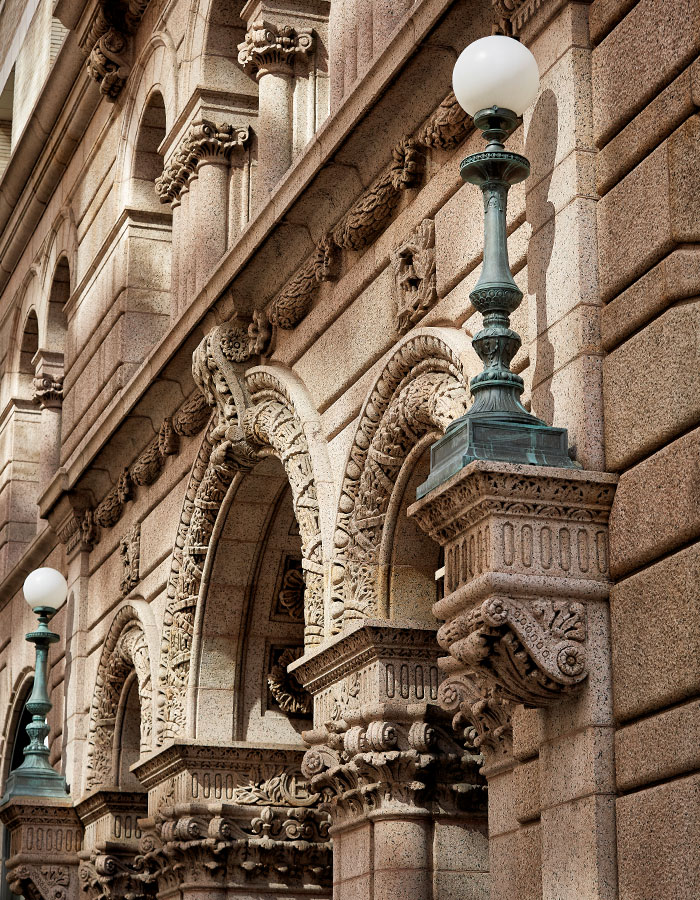The Equitable Building is full of stories.
The silver boom. The birth of Denver’s financial district, and of its status as one of the west’s most important cities. The Panic of 1893. The Great Depression. The growth of our financial institutions, government, railroads, oil and gas businesses, and legal and medical communities. The oil boom. The city’s burgeoning growth since 2010. The Equitable has seen it all, and been part of it all.
The Equitable Building will continue to play an important role in the city’s future. Today, our distinguished roster of tenant-owners are leaders and innovators in a range of industries, including energy, law, and financial services. Their present and future are just another part of the Equitable’s ongoing story.
In celebration of our building’s grand history, we share some of the stories it has to tell.
Notable tenants in our history.
For the past 120+ years, the Equitable has been fortunate to count a vast range of prestigious businesses among its tenants. Our featured stories offer a glimpse into the colorful history of some of the many people who’ve called the Equitable home.
Pioneering lawyer. First woman to join Colorado and Denver Bar Associations, and first woman to practice before the U.S. Supreme Court. Had offices at the Equitable throughout her career.
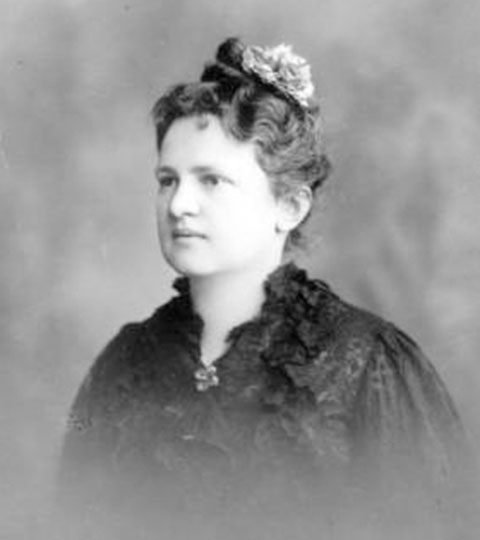
Mary Lathrop
Lawyer, populist candidate, and Denver’s eighth governor. Instrumental in the passage of women’s suffrage. Had offices at the Equitable until the Colorado State Capitol was completed.
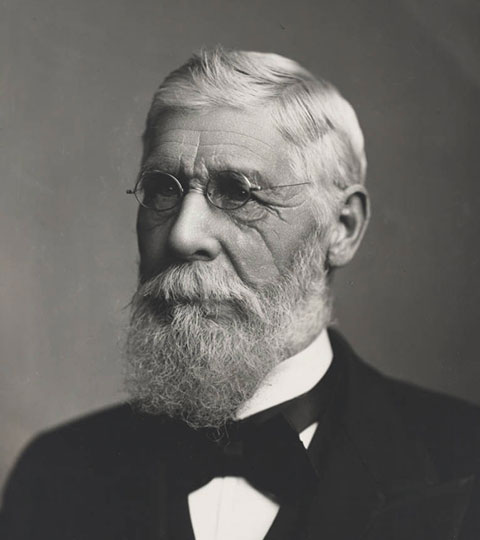
Davis H. Waite
Railroad tycoon, mine owner, and First National Bank of Denver president. Began as a 12-year-old NYC messenger for a bank, working his way up. Bank was headquartered at the Equitable.
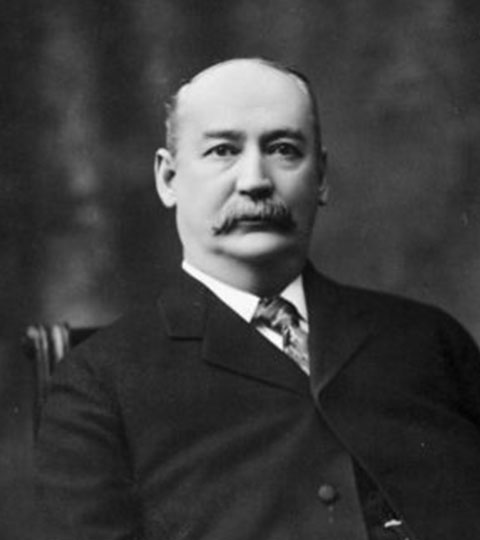
David Moffatt
Notable physician and teacher. One of the foremost neurologists in the U.S. during his time. Professor on the medical faculty of DU and the University of Colorado. Had offices at the Equitable.
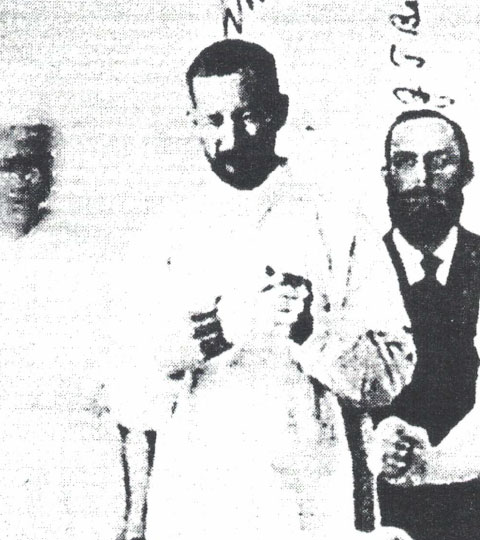
J.T. Eskridge
Denver’s most beautiful interior.
A building as grand, graceful, and exquisite as the Equitable doesn’t happen by chance. The Equitable Life Assurance Company, which financed its construction, wanted only the best. As Rocky Mountain News architecture critic Mary Chandler wrote, “If God is in the details, the Equitable is celestial.”
The work of architects Andrews, Jacques & Rantoul of Boston, the building was designed in an Italianate Renaissance Revival style. The exterior features pink Pike’s Peak granite blocks on the first two stories. Terra cotta banding separates the seven upper floors into wedding cake layers. Round-arched windows, egg and dart molding, dentils, cornices, a large Palladian window and balcony, cherubs, and bound acanthus further embellish the Equitable’s splendid exterior. With its layout as two Es back to back, it was designed to maximize natural light and fresh air to every office.
The building’s sumptuous, breathtaking lobby features French, Italian, and US-sourced marble pillars, walls, and floors, elegant chandeliers, a mosaic ceiling, and a bronze grand staircase. The staircase leads to a spectacular, one-of-a-kind Tiffany stained glass window designed by John Quincy Adams Ward that depicts Minerva, the Greek goddess of protection. Decorative “E” initials appear as a motif throughout the building. Carved wood and wrought iron staircases appear in the upper stories.
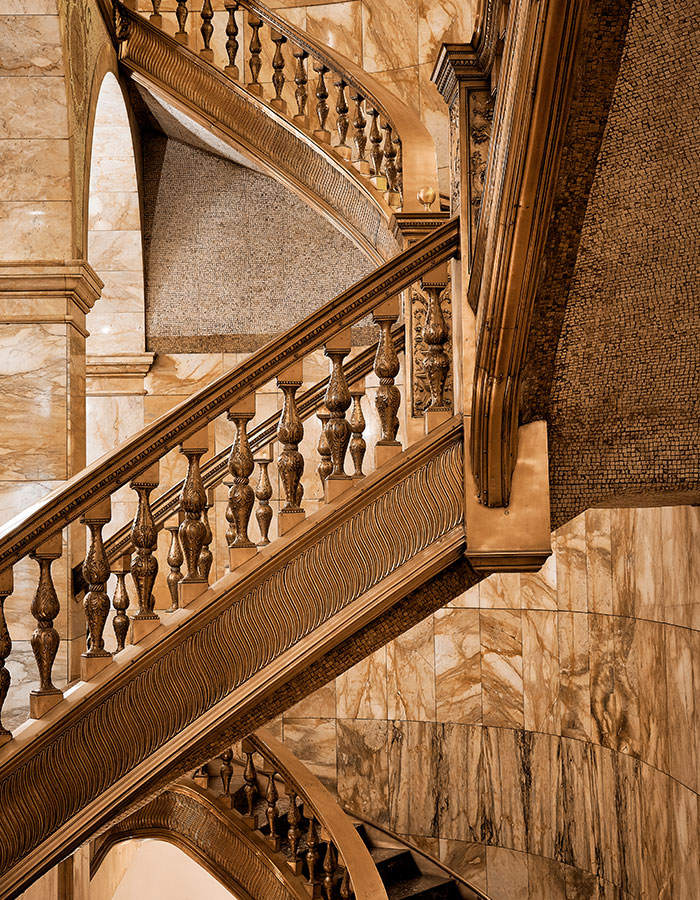
A rich history that tells a distinctively American boom-and-bust tale.
Built at the tail end of Colorado’s late 19th-century silver boom. First foreclosed during the Great Depression. Thriving during Denver’s 1980s oil boom. The Equitable’s timeline tells a truly American tale of fortunes found, lost, and regained.
1892 — The Equitable Building, now the tallest building in Denver, is complete. Tenants move in. Average rent is $15 per month. The building’s opening marks the development of Denver’s new financial district, later called “The Wall Street of the West.”
1893 — The Panic of 1893 marks the end of the silver boom. The Equitable Building, hailed as a triumph only a year earlier, is now dismissed as an extravagant folly.
1893-4 — Despite the depressed economy, the Equitable becomes a center of political power. With Denver’s capitol under construction, it’s the seat of the state’s executive offices.
1902 — With the economy improving, occupancy rates and rents go back to the “boom” days. The Equitable is once again a fashionable address.
1902 — Janitor Andrew Anderson falls to his death while washing the building’s exterior windows. According to tenants, his friendly ghost has haunted the building ever since.
1910 — The Equitable loses its title as Denver’s tallest building to the 20-floor Daniels and Fisher Tower, now the tallest building west of the Mississippi.
1935 — A carelessly discarded cigarette causes a major fire that ravages the building. According to legend, elevator operator Bessie Ford bravely stood her post, ferrying firefighters to the upper floors. Much of the building’s extensive law library is destroyed.
1977 — The Denver City Council designates the Equitable as a historic landmark.
1978 — The Equitable Building is added to the National Register of Historic Places.
1981 — Denver’s oil boom ushers in a new era of prosperity. Rent increases to $30/SF. The Equitable has 100% occupancy and a waiting list.
2000 — St. Charles Town Co. converts the building to individually owned condominiums.
1890 — Equitable Life Assurance Company founder Henry Hyde finances construction for the $1.75M building that will serve as his newly founded company’s western headquarters.
1908 — Pioneering Denver financier and Rio Grande Railroad Company president William Barth buys the Equitable for $1.3M.
1926 — Barth’s heirs sell the building for $2M to Otis & Co., a Cleveland stock brokerage firm, in Denver’s biggest real estate deal.
1934 — In the midst of the Great Depression, the building undergoes its first foreclosure.
1935 — Barth’s granddaughter Charlotte Barth Howell buys it for $950k at a foreclosure sale.
1956 — Barth Howell sells for $2.5M to a group headed by Denver jeweler Jess Kortz.
1962 — Two groups, headed by businessmen Seymour Fortner and Bruce Paul, buy the building for an undisclosed price.
1968 — Denver’s Garrett-Broomfield & Co. buys the building for a reported $2.5M.
1977 — A group of Canadian companies purchase the Equitable for $3M.
1980s — The Equitable goes through several owners, including an LP tied to Boettcher & Co., Urban Holdings, Inc. of Canada, Wells Fargo Bank, and Mutual of New York.
1988 — Mutual of New York becomes sole owner following foreclosures against the others.
2000 — St. Charles Town Co. purchases the building. Conversion to condominiums begins.
Present — The Equitable’s individual condominium owners ensure that its long-term preservation rests in the hands of those who care about it most — its occupants and owners.
1890 — Equitable Life founder Henry Hyde is convinced by Denver branch head Henry R. Wolcott to build his western headquarters in Denver. The Rocky Mountain News calls the choice a sign of “the supreme confidence the Eastern Capitalists have in Denver.”
1890 — Extensive fireproof testing confirms that the Denver Terra Cotta Company’s porous terra cotta would outperform the more commonly used dense clay brick floor supports. Architects nationwide take notice, integrating the material into their designs.
1892 — Construction is complete. Hyde has spared no expense in ensuring quality. The combined cost of land and construction is $1.75M, an impressive figure at the time. The nine-floor building, now the tallest in Denver, features the latest technology: its own electrical and water systems, eight elevators, water closets, and gas fireplaces in every room.
1935 — Charlotte Barth Howell invests $500K for the building’s first renovation. At this time, the bronze scrollwork on the elevator doors is replaced with the brass doors seen today.
1964 — The Equitable’s second major remodeling is undertaken. It includes new light fixtures, dropped ceilings, recessed lighting, the addition of a first-floor women’s restroom, and refurbishment of the elevator cabs and door fronts.
1980 — The Equitable undergoes a $2M renovation. It includes the addition of central air conditioning and replacement of the original revolving entry doors (removed in 1902).
2001 — St. Charles Town Company spends ~$5.5M to “polish” the building. Company founder and CEO Charles Woolley II takes a special interest in making the Equitable shine.
2009 — The Owner’s Association undertakes a multi-million-dollar preservation project phased over five years. It includes cleaning the exterior, re-pointing mortar, and repairing and replacing bricks, terra cotta, and window trim.
Ghosts, scandals, and robberies, oh my!
The Equitable has also seen its share of sensational tales. Below are a few of our favorites, all based on true historical events as depicted in Kathleen Barlow’s history of the Equitable Building. But don’t worry — we only have friendly ghosts!
Phipps, a senator’s wife, was driving around City Park with her maid and chauffeur when a woman leapt into her car, threatened her with dynamite, and demanded $10,000. She also demanded they pick up Phipps’ young daughter as another hostage. They drove to First National Bank at the Equitable to get the money. Phipps rushed in and alerted the staff, who called the police. The woman threw the dynamite at the police, but it didn’t explode, having hit the car’s soft interior walls. She was arrested.
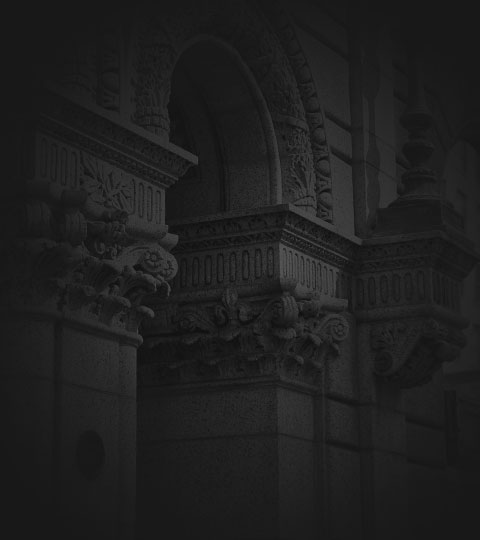
Genevieve Phipps
Anderson, a janitor at the Equitable, suffered a dramatic death when he fell several stories while cleaning windows. His ghost is believed to haunt the building to this day. Other ghostly presences are suspected, too. Many tenants report smelling a Bay Rum scent of masculine cologne or aftershave. There have been reports of doorknobs turning, sudden cold drafts, chairs and filing carts being moved, and even sightings. Fortunately, all reports reveal our ghosts as friendly and protective.
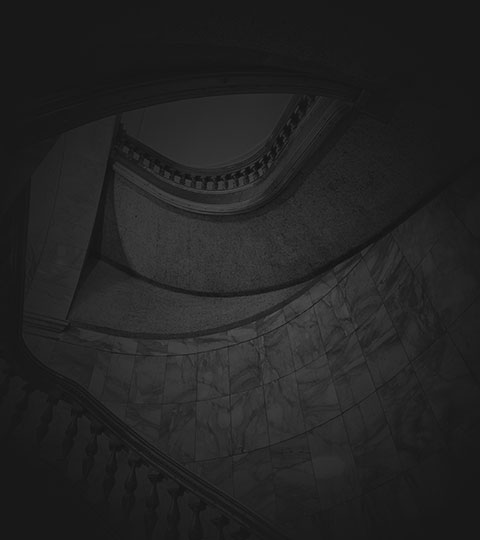
Andrew Anderson & Others
Ewart, owner of a rooming house, attempted to kill Joseph Kitteredge Choate in his lawyer’s office on the fourth floor of the Equitable. Ewart alleged that Choate had broken their engagement, but Choate — president of the Denver Cotton Mills Company — denied any such engagement. He swore his conduct had been only “generous and honorable.” When Ewart became violent, Choate’s lawyer was able to wrestle the gun from Ewart and save his client’s life. Ewart was sent to prison.
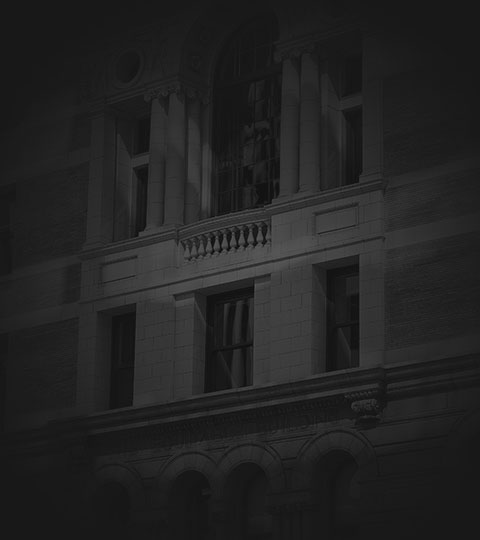
Martha Ewart
Peck and George Kroening were friends who worked in the same office in the Equitable Building. Unfortunately, Kroening was having an affair with Peck’s wife. When Peck discovered the affair, he shot Kroening in the chest four times. The sensational trial captivated the city, and Peck’s woeful story led to his acquittal for the murder. As one newspaper reported, “The verdict was a proper one and on every hand meets with approval. Death without the benefit of clergy is good enough for a seducer.”
